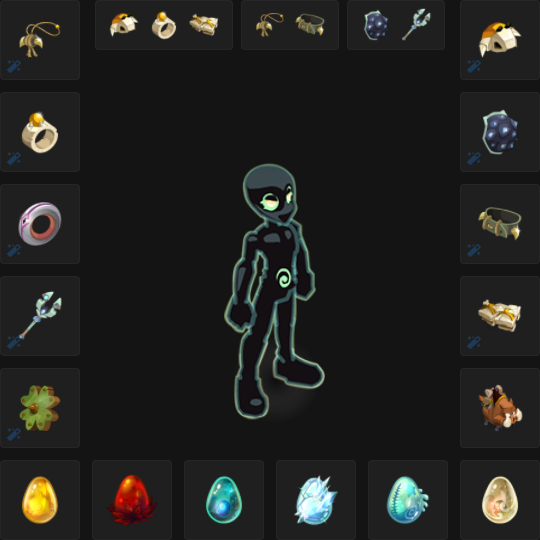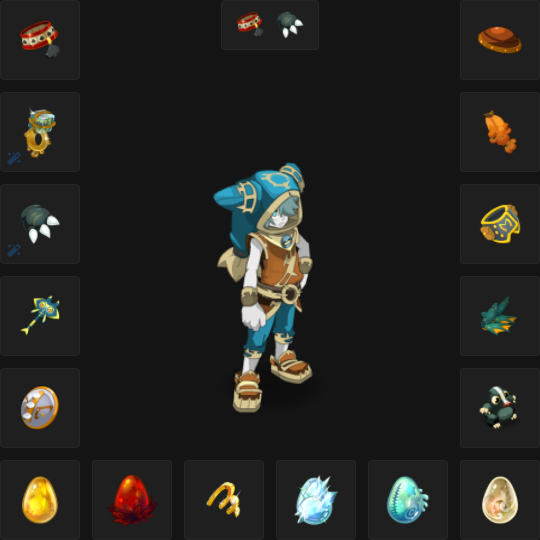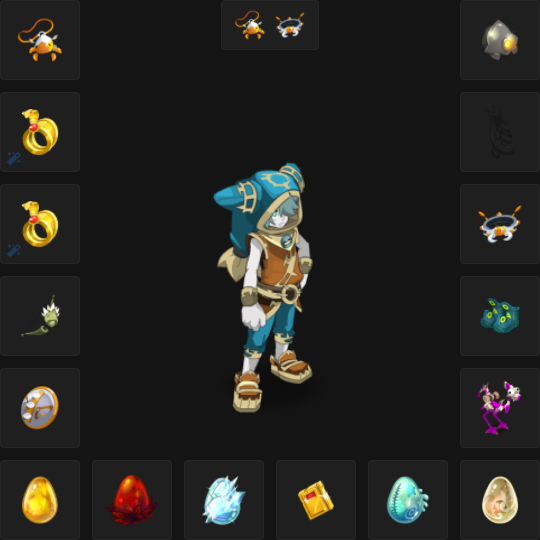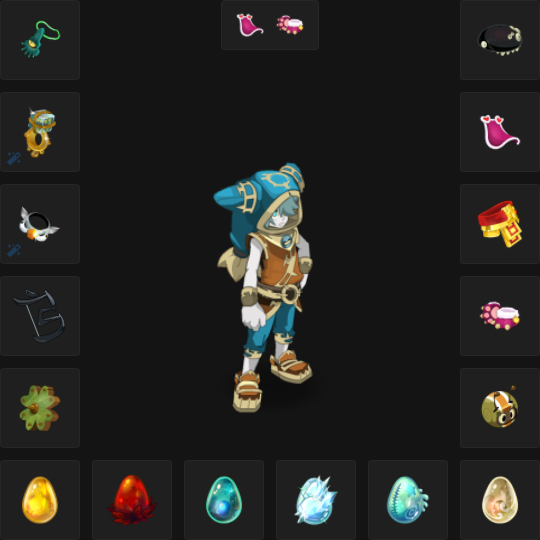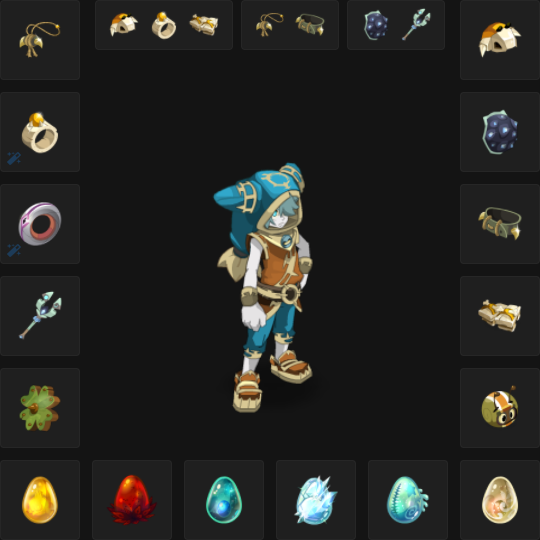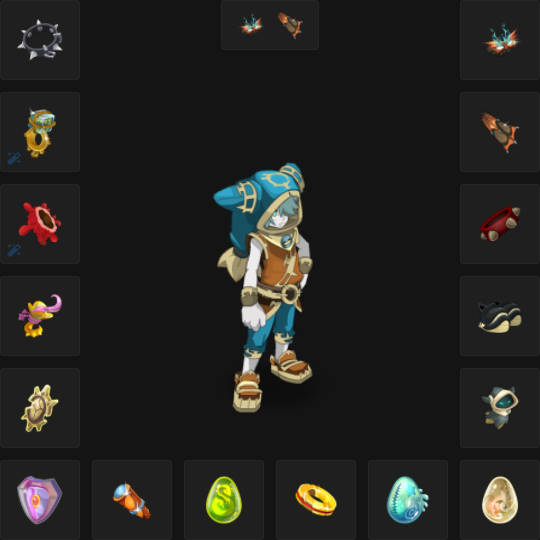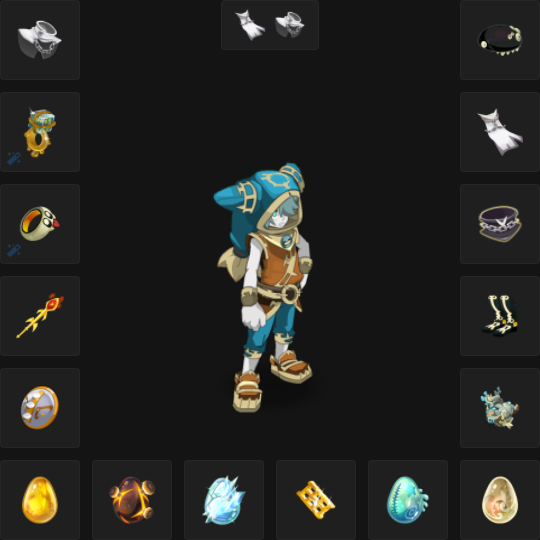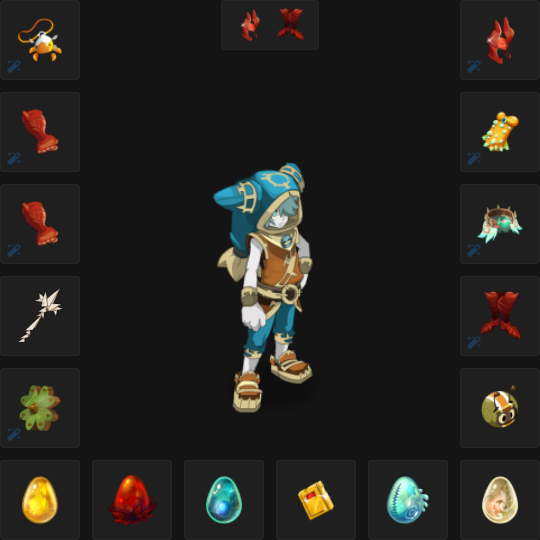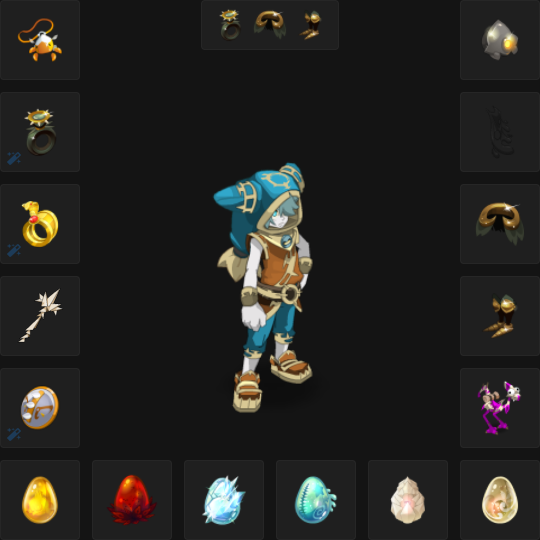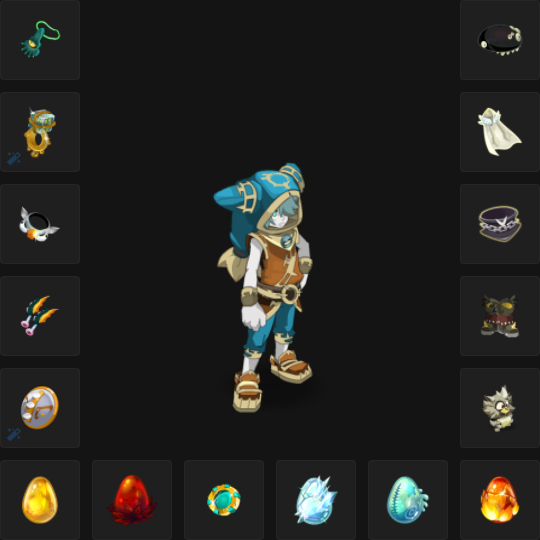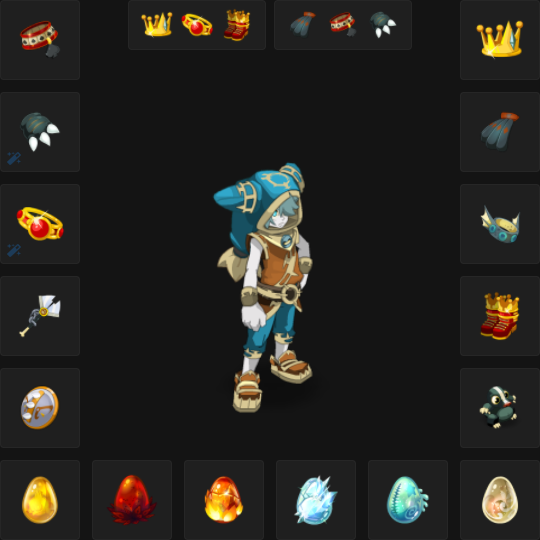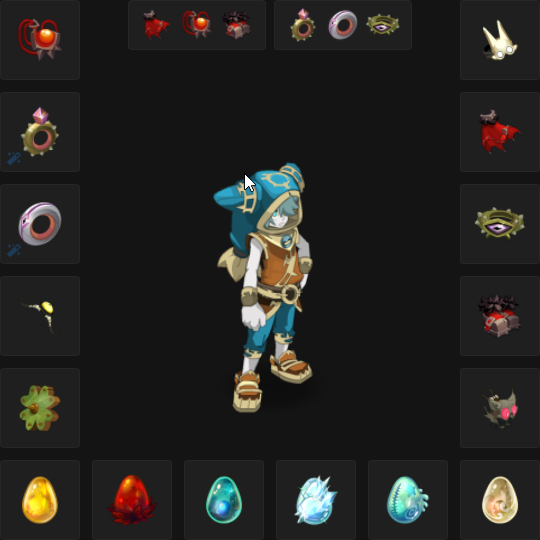
ElioPourLesNoobs
Everything you need to know to get started as Elio!
By Shin-dei-ru (Echo)
Role
Eliotrope is a great choice either for solo-playing or placed in a team.
Damage Dealer
Eliotropes can be one of the best damage-dealers in Dofus.
Their signature Spell "Portal" increases the damage of everybody who hits through their Portals.
Portal:
Flexible Portal:
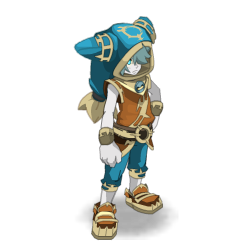
Healer
Eliotropes got multiple ways to heal allies.
Most of these are based on the maximum-healthpoints of the target:
Intelligence-Eliotropes come with some more heal spells like "Wakfu-Ray" depending on their intelligence-stat and heal-stat or even based on the damage they do ("Virus", "Distribution").
Overall, portals increase your heal in the same way they increase your damage.
Positioner
It allows allies and ennemies to walk through, to teleport to another portal or to cast spells into, to be able to hit nearly anywhere possible.
Also Eliotropes have many other movement-spells to push & pull ennemies, allies and themselves or to create new portals.
Elements
Overview about different elements on Eliotrope.
First of all, all Mono-Element-Builds are very good on Elio.
Hybrid-Builds are less good on Elio, except if you really want to use the utility of more than one element while also dealing some damage with the utility spell. Usually your damage in Hybrid-Builds is way less than in Mono-Builds.
My personal preference for Hybrid-Builds is 100%crit all elements full dmg in PvM, since vitality and %resistance do not really matter when you're able to kite quite good.
Agility
Agility Eliotrope often is the first choice for beginners since it's very flexible and the high dodge helps you at the beginning to learn and focus on how portals work.
There's also a 12/6 agility set (full allister, jammy jack) with less vita and %resistances but higher damage.
Another possibility is to play a high mp-reduction agility set to make it even more difficult for your ennemies to ever reach you.
I don't recomment focusing on Sinecure by playing an agi pushback-dmg set since the spell really isn't good at the moment and the other agility spells only push 2 cells instead of 4.
Intelligence
Intelligence Eliotropes come with more heal spells than other Eliotropes, as mentioned in "Roles" section.
Strength
Strength Eliotrope comes with a lot of utility while attacking.
Center: pushes 2 cells away from direction it's casted from.
Corners: pushes 2 cells away from the center.
Doesn't damage allies.
Chance
Chance Eliotrope Spells got the worst utility compared to other elements, but the chance-build comes with very high range. Often chance is used as a surprise-build in 1v1 to avoid target %resistance stacking of your opponent.
Another common chance build is based on Servitude-Belt, a legendary Item that applies "unmovable" state to you at the end of your turn untill you get hit. This build shines vs pushback damage ennemies, sometimes xelors and in PvM against any ennemies who move/teleport you.
Portals
What is the Portal number?
The number is just an indicator for which Portal disappears first, when we place more than 4 Portals.
The Portal with number 1 will be removed first.
One team can only have 4 Portals, it doesn't matter how many Eliotropes are in this team.
This works for both teams separately, so there can be 8 Portals on the map: 4 from team red, 4 from team blue.
How to hit into portals?
An attack leaves your portals the same direction and distance, which you are casting your spell into.
Imagine an arrow from your cell to the cell of the Portal in which you are entering your attack.
Now simply take that arrow and put its tail to the Portal where your attack leaves. Don't change the direction of the arrow (so imagine it just like a vector, in case that helps).
The Tip of the arrow now points to the cell where your attack will be finally casted.
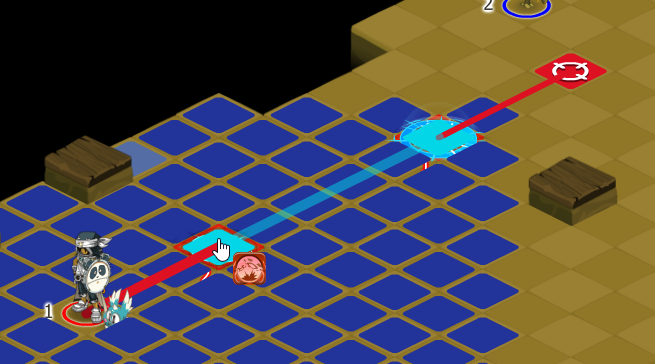
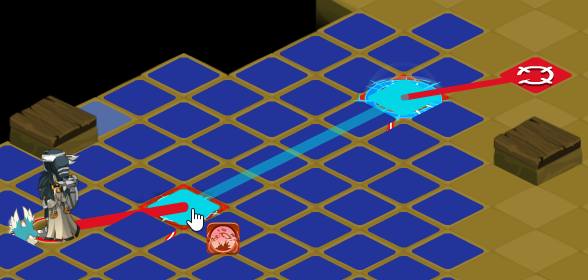
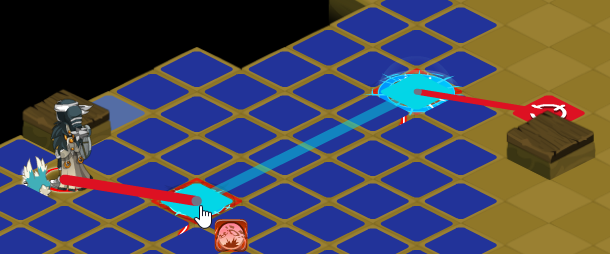
How do portals connect?
Portals don't connect randomly, there are some rules:
Rule 1
Portals always connect to the next nearest Portal.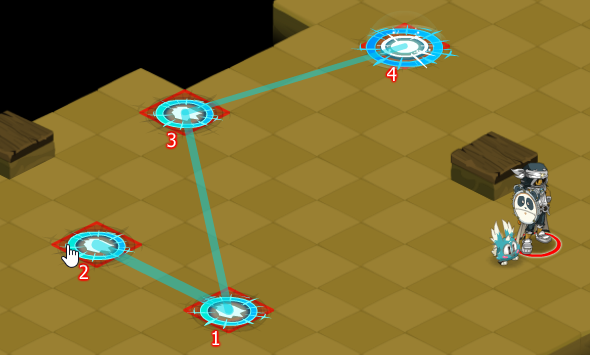
In this example, we're going to hit into Portal 2.
Portal 1 is closer to Portal 2 than 3 & 4, so Portal 2 connects to Portal 1 first.
The next nearest Portal then is Portal 3, then Portal 4.
Rule 2
When there is more than one Portal with the same distance from the Portal in which you're going to hit/walk into, it will connect "Clockwise", that means the blue lines will run Clockwise.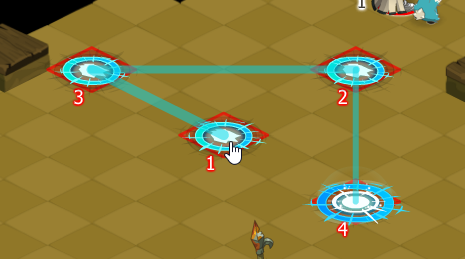
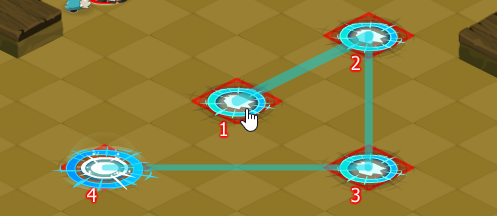
In this example, we're going to hit into Portal 1.
Now Portal 3, 2 and 4 all have the same distance to Portal 1.
The game chooses the connection of the portals so that the blue lines always run clockwise.
Rule 3
Same distance (rule 2) AND 180° degree (so no visible clockwise rotation): reversed Dofus-AoE-Rotation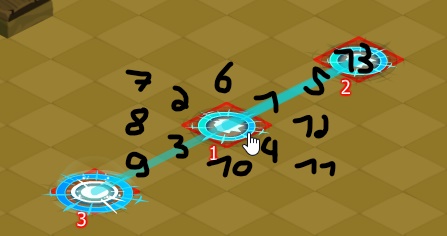
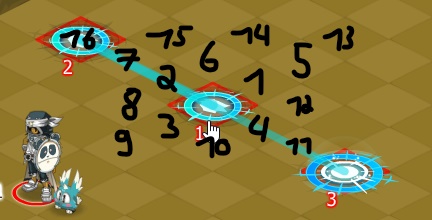
In this example you can see a quite rare case which does not happen very often.
Just to understand how it works:
It works like a "reversed Dofus-AoE-Rotation".
Imagine checking cells 1 by 1 if there is a Portal on a cell, then the cells are passed through in this order (Screen 1 & 2).
It is exactly opposite to the "normal Dofus-Aoe-Rotation".
The "normal Dofus-AoE-Rotation" also starts where I've painted "1", but then goes on in the opposite direction (where I've painted 4-3-2-5-12-11-... you can test it very good with Cra Explosive-Arrow on low lvl mobs and see in which order they die).
Tips & Tricks
You know everything about Eliotropes?
Here are some usefull and not really well known things about Eliotropes.
1) Portal 1 will be removed
2) A new open Portal is placed on the cell of the attacker.
The Portal you're standing on will simply be opened and if there are other open portals you'll get teleported.
An Elio in both teams forbids both teams to walk into Portals turn 1.
You can use it on teammates to buff their range and still get the +3 portal-range yourself.
The trap itself doesn't count as Portal, you can place infinite stupors.
Due to this we can optimize our damage by chosing the right spells to move our target through portals.
Spells which move the target before dealing damage re-apply conjuration, then consume it instantly (Therapy, Sermon).
Spells which damage first and move afterwards re-apply conjuration but don't consume it (Contempt, Shock, Convulsion, Bullying, Lightning Fist). This is really important for Iops-Wrath or other big damage spells.
Sets
